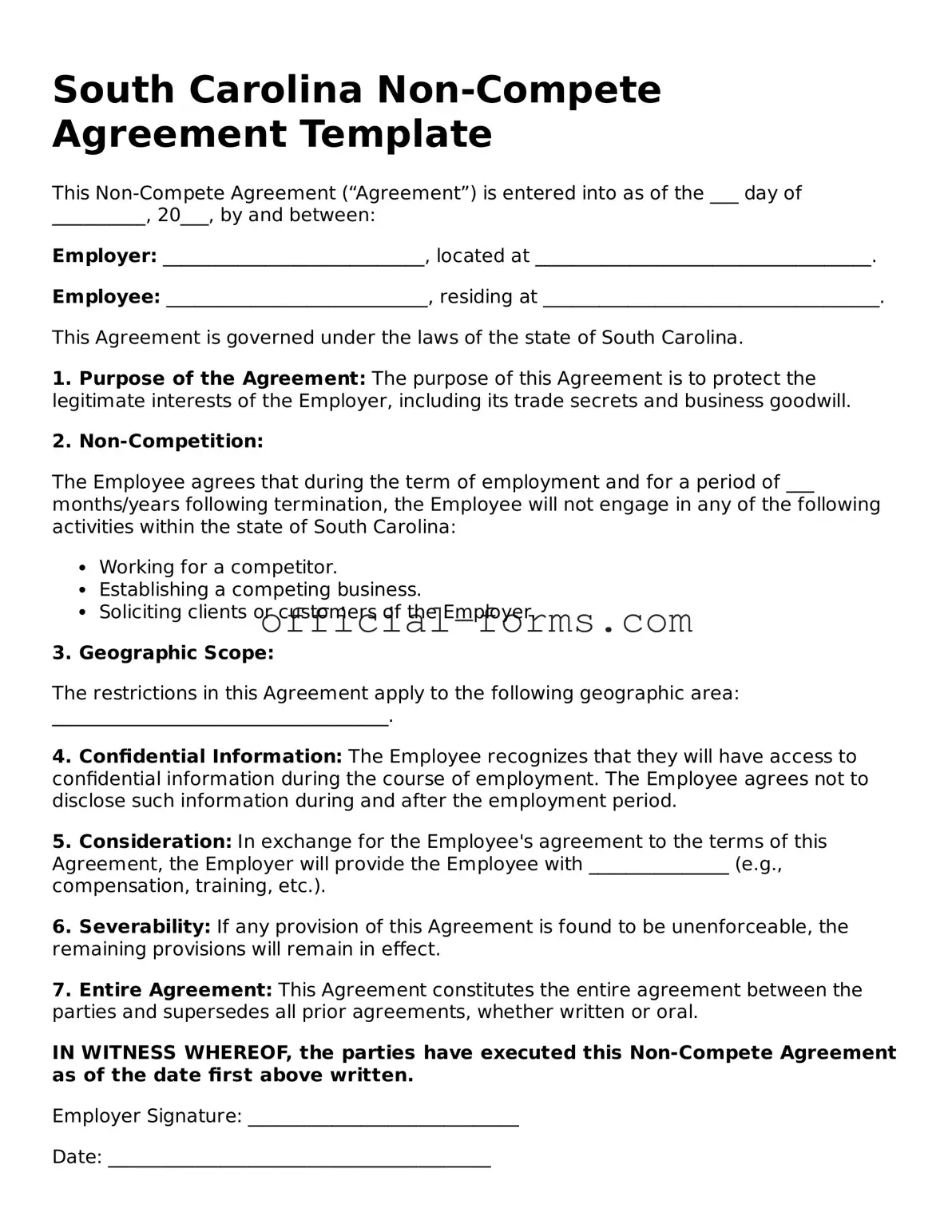Filling out a Non-compete Agreement form in South Carolina can be a daunting task. Many individuals make mistakes that can lead to misunderstandings or unenforceable agreements. One common error is failing to clearly define the scope of the restrictions. If the terms are vague, it can create confusion about what activities are actually prohibited.
Another mistake is neglecting to specify the duration of the non-compete clause. Without a defined time frame, the agreement may be deemed unreasonable. Courts generally look for a reasonable duration that protects the employer's interests without unduly restricting the employee’s ability to find work.
People often overlook the geographic limitations of the agreement. It is essential to outline the specific areas where the restrictions apply. A non-compete that covers too broad of a geographic area may be challenged in court, as it could be seen as overly restrictive.
Additionally, individuals sometimes fail to consider the nature of the business and the position held. The restrictions should be tailored to the specific role and industry. A one-size-fits-all approach may not hold up in legal scrutiny.
Another common error is not having the agreement reviewed by legal counsel. While it may seem like an unnecessary step, a legal expert can identify potential pitfalls and ensure that the agreement complies with South Carolina laws.
People also frequently neglect to include consideration in the agreement. Consideration refers to something of value exchanged between the parties. Without it, the agreement may not be enforceable. It is important to outline what the employee receives in return for agreeing to the non-compete.
Moreover, some individuals fail to communicate the terms clearly with the other party. Open communication can prevent misunderstandings and ensure that both parties are on the same page regarding the expectations and limitations of the agreement.
Lastly, many forget to keep a copy of the signed agreement for their records. Having documentation is crucial, as it serves as proof of the terms agreed upon. This can be invaluable in the event of a dispute.
